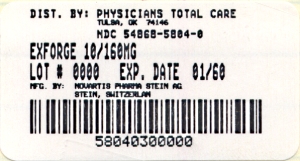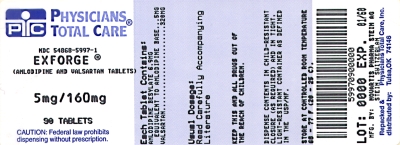Exforge | Amlodipine Besylate And Valsartan Tablet while Breastfeeding

What is Exforge | Amlodipine Besylate And Valsartan Tablet used for?
Is using Exforge | Amlodipine Besylate And Valsartan Tablet unsafe in breastfeeding? Can there be bad consequences for baby if I use it while breastfeeding?

8.3 Nursing Mothers It is not known whether amlodipine is excreted in human milk. In the absence of this information, it is recommended that nursing be discontinued while amlodipine is administered. It is not known whether valsartan is excreted in human milk. Valsartan was excreted into the milk of lactating rats; however, animal breast milk drug levels may not accurately reflect human breast milk levels. Because many drugs are excreted into human milk and because of the potential for adverse reactions in nursing infants from Exforge, a decision should be made whether to discontinue nursing or discontinue the drug, taking into account the importance of the drug to the mother.
Exforge | Amlodipine Besylate And Valsartan Tablet Breastfeeding Analsys
Amlodipine while Breastfeeding
Low RiskCAS Number: 111470-99-6
It is excreted into breast milk in small amount (less than 10% of relative dose) without problems observed in infants whose mothers were on treatment with this drug. (Naito 2015, Ahn 2007)When measured, the plasma levels of drug in these infants were undetectable (Vasa 2013). Because its drug elimination period is very prolonged, an alternative drug known to be safer should be used, especially during the neonatal period and in case of premature infant.
Valsartan while Breastfeeding
Low RiskCAS Number: 137862-53-4
At latest update, relevant published data on excretion into breast milk were not found. A high protein-binding capacity makes excretion into breast milk unlikely. In addition, a low oral bioavailability makes difficult the absorption towards the infant's plasma from ingested milk, except in prematures or newborns who may show an increased absorption. Case report of kidney function impairment of a baby whose mother had taken Telmisartan in pregnancy. Until more data on this medication is available, safer alternative drugs are preferred, especially in premature babies or during the neonatal period. Should an ARA-II medication (Sartan type) be necessary, the associated risk may be decreased by choosing the one with a favorable pharmacokinetics (shorter half-life elimination time and lower bioavailability) like Eprosartan and Losartan
Exforge | Amlodipine Besylate And Valsartan Tablet Breastfeeding Analsys - 2
Amlodipine while Breastfeeding
CAS Number: 88150-42-9
Limited information indicates that milk levels of amlodipine are usually low and plasma levels in breastfed infants are undetectable. Maternal use of amlodipine during breastfeeding has not caused any adverse effects in breastfed infants. If amlodipine is required by the mother, it is not a reason to discontinue breastfeeding.
Valsartan while Breastfeeding
CAS Number: 137862-53-4
Because no information is available on the use of valsartan during breastfeeding, an alternate drug may be preferred, especially while nursing a newborn or preterm infant.

I already used Exforge | Amlodipine Besylate And Valsartan Tablet and meanwhile I breastfed my baby should I be concerned?
During whole lactation period you shall first discuss with your doctor and then together you shall decide whether you shall take that drug or not however if you have already taken Exforge | Amlodipine Besylate And Valsartan Tablet then you shall inform your doctor, But you should not be worried too much as Exforge | Amlodipine Besylate And Valsartan Tablet comes in category of low risk drug.
My health care provider has asked me to use Exforge | Amlodipine Besylate And Valsartan Tablet, what to do?
Exforge | Amlodipine Besylate And Valsartan Tablet comes in category of low risk and if your doctor is aware that you are breastfeeding it should be ok to use
If I am using Exforge | Amlodipine Besylate And Valsartan Tablet, will my baby need extra monitoring?
Not much
Who can I talk to if I have questions about usage of Exforge | Amlodipine Besylate And Valsartan Tablet in breastfeeding?
US
National Womens Health and Breastfeeding Helpline: 800-994-9662 (TDD 888-220-5446) 9 a.m. and 6 p.m. ET, Monday through Friday
UK
National Breastfeeding Helpline: 0300-100-0212 9.30am to 9.30pm, daily
Association of Breastfeeding Mothers: 0300-330-5453
La Leche League: 0345-120-2918
The Breastfeeding Network supporter line in Bengali and Sylheti: 0300-456-2421
National Childbirth Trust (NCT): 0300-330-0700
Australia
National Breastfeeding Helpline: 1800-686-268 24 hours a day, 7 days a week
Canada
Telehealth Ontario for breastfeeding: 1-866-797-0000 24 hours a day, 7 days a week
